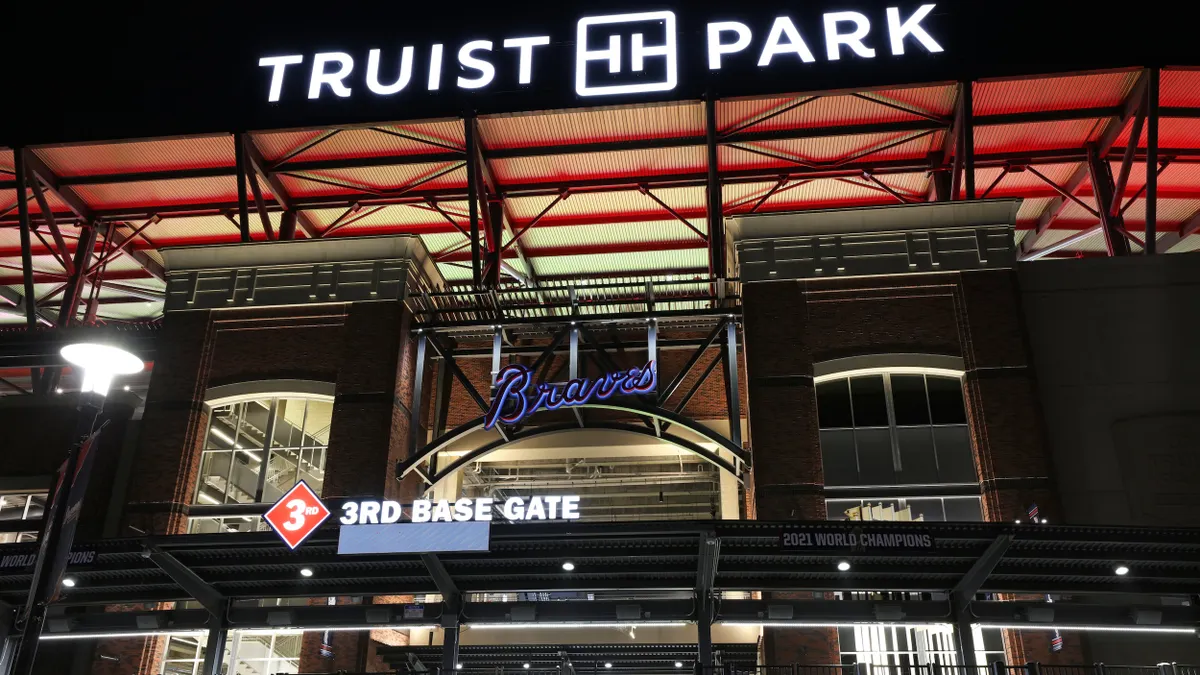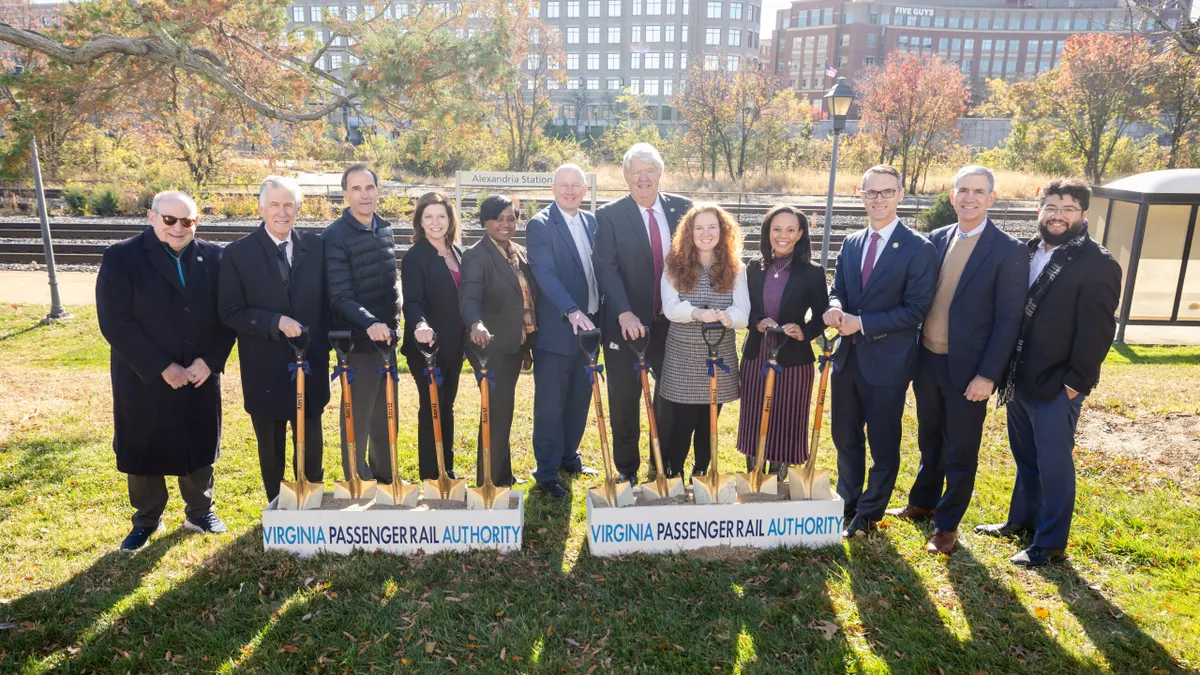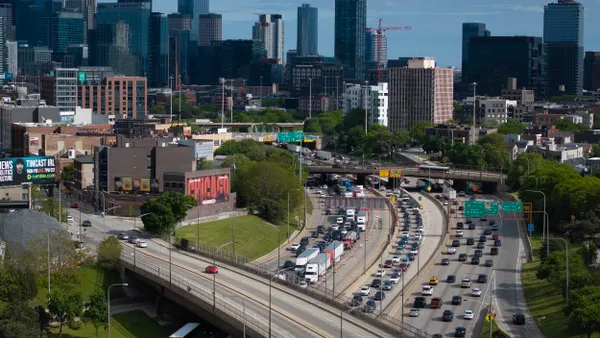The wealthy Chicago suburb of Evanston, IL embraces bike-share as yet another alternative to driving, a great way to get around the city’s bike trails at lower cost.
Meanwhile, Humboldt Park, a historically Puerto Rican and minority neighborhood in Chicago, had a very different opinion. The Divvy bike-sharing docks located in that neighborhood were viewed skeptically; residents worried their presence was yet another sign of a gentrifying neighborhood. Why would we get these bikes, residents wondered, before more pressing needs, such as safety measures or expanded broadband?
That’s the contrast examined in a recent study from researchers at Northwestern University, who used advanced machine learning to analyze focus groups of residents in both neighborhoods discussing bike-share. The findings, published in the journal Transportation Research Part A, reinforced a persistent problem for new mobility options: Minority and low-income neighborhoods aren't always on board.
"It was almost seen as this bad omen of the neighborhood shifting, that it was a system that would make changes that wouldn't benefit local communities," said study author and Northwestern engineering professor Amanda Stathopoulos. "The operator is well-intentioned, but just putting service in new communities doesn't mean people will ride."
The problem isn't unique to Chicago. Bikes from a network sponsored by Ford were vandalized last summer in San Francisco to protest commercializing neighborhoods, and Baltimore’s bike-share network was shut down due to dwindling usage and damage to equipment that was never embraced by low-income residents.
Now as cities such as Boston and New York are widening their bike-share systems and new mobility options come online, that skepticism must be confronted head-on. The networks are touted as a way to close transit deserts and give low-income neighborhoods a new transportation option, but it’s not as simple as dropping in new bikes.
"To really understand how bike-share will be used means understanding a community’s identity and norms," said Stathopoulos. "It’s fair to say that bigger networks care about it, but I’m not sure how much reckoning there’s been with how successful they are. This is not something that can be measured just with statistics."
Changing the conversation
When Citi Bike docks appeared in the largely minority Bedford-Stuyvesant neighborhood in Brooklyn, NY, Tracey Capers of the community development group Bedford Stuyvesant Restoration saw the potential for the neighborhood to ride the "wave of the future." The massive neighborhood had always had transit problems, and bikes could help car-less residents get around, and put a dent in the neighborhoods’ health problems.
There was just one problem, said Capers, the group’s executive vice president. "The reaction, I’d say it was a cacophony," she said. "People are asking is this really for us? People didn't understand how it all worked, they wanted to know why it was taking up parking spaces. I heard everything under the sun." A survey taken in 2015 found that just 18% of Bed-Stuy residents had used a Citi Bike.
Bed-Stuy wasn't alone. A study from Portland State University surveyed residents in Chicago, Philadelphia and Bed-Stuy and found people of color, or those with lower incomes, had more concerns about bike-sharing than white or high-income people. Among those concerns were uncertainty about how it worked, the cost and the fear that bike-share would make their neighborhoods too expensive.
“Among lower-income people of color, there was a lack of social exposure, of people seeing friends and family on bikes,” said Nathan McNeil, one of the study authors. “That’s a serious gap that hasn't been given the attention it deserves.”
A grant from the Better Bike Share Partnership — backed by People for Bikes and the National Association of City Transportation Officials (NACTO) among others — helped Bed-Stuy Restoration change that exposure problem.
Community groups and churches organized group rides, and schools offered bike education classes. Ads were rewritten to reflect the voice and priorities of the neighborhood. Discounted memberships were publicized and bulk memberships were offered to employers to get more people to sign up. From there, more listening sessions in the neighborhood helped Citi Bike explore new dock locations that would better serve the community.
Just a year later, Bed-Stuy was an unexpected poster child for Citi Bike. A 2016 report found that year-over-year ridership growth there well outpaced the rest of the city. In some months, Citi Bike trips had more than doubled compared to the previous year.
"Now I feel like the conversation has changed from ‘why is this here?’ to ‘why isn't this in my neighborhood yet?'”

Tracey Capers
Bedford Stuyvesant Restoration Corp.
This success also become a model for other neighborhoods who now seek out Citi Bike. A $100 million investment from Lyft — which acquired parent company Motivate last year — will double Citi Bike’s reach. Lyft has promised a robust public engagement process to ensure that it reaches underserved neighborhoods, and Capers said her experience shows they need to start at the grassroots level.
"Having a historically-rooted, minority-led organization leading the charge, that was so important for the community,” Capers said. “It helped demystify bike-share. Now I feel like the conversation has changed from ‘why is this here?’ to ‘why isn't this in my neighborhood yet?'”
Content vs. context
Personal engagement has become a top priority for successful cities trying to expand mobility options. In St. Louis, a bike-share working group lets community representatives regularly consult the city on how bikes can best serve them. Cities like Oakland, CA have made community outreach a requirement in permitting new micromobility companies, and many bike-share companies have established equity policies or hired staff to head up community engagement.
“We’ve seen cities take the approach of not proposing bike share as a stand-alone service, but as a tool for community members to do what they need to do. It’s about molding it around the community rather than dropping it in,” Nicole Payne, a program manager at NACTO who has worked with the Better Bike Share Partnership
“The cities and the operators, they know the content, but it’s communities that know the context,” Payne added.
That kind of one-on-one engagement can be time-consuming, but Payne said there are strategies companies can take from the top to fight any perception problems. Advertising discounted membership fees for public aid recipients (a feature of Citi Bike) or accepting other forms of payment for unbanked customers can attract low-income users. Kiosks and websites can be confusing, so simpler sign-up information or better technical assistance can help ease in customers.
Of course, bike-sharing is no longer the only game in town. Dockless e-bikes and scooters have flooded cities, run by private companies who may be less incentivized to take the extra step to reach underserved neighborhoods. Portland State’s McNeil said there’s some evidence that low-income residents will use dockless vehicles to close gaps in public transportation, but "we don’t know all the equity issues yet."
“There’s every risk that they flame out, and leave a city with no options for these communities,” McNeil said, meaning cities need to keep up their focus on equity.
The good news, Payne said, is that the perception questions that dogged bike-share at the start helped shape regulators’ approach to any new mobility option, and dockless systems that can adapt on the fly should be well-prepared to seek out new customers.
“If anything, cities are even more empowered,” she said. “Bike-share was the perfect testing ground. Now cities can craft requirements for how companies are supposed to operate.”


















